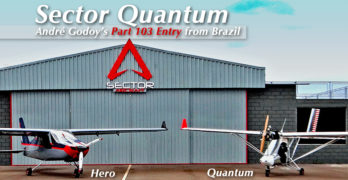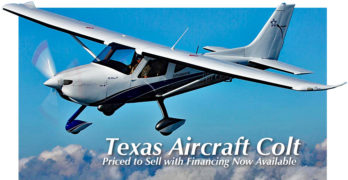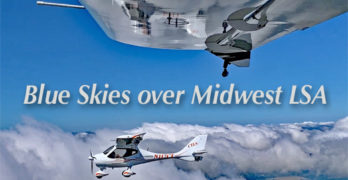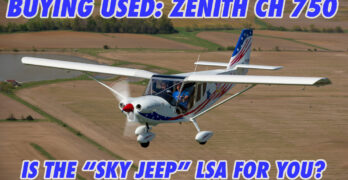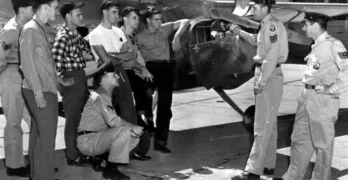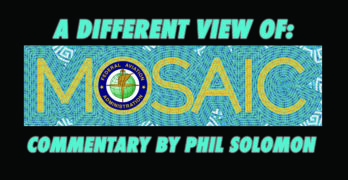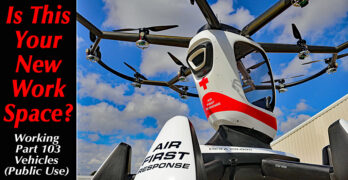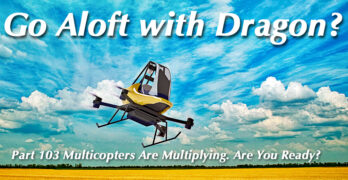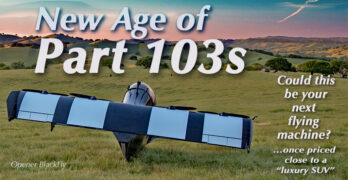Welcome to a New Year! …and to a new airplane, a new Part 103 entry to be specific.
One of the most amazing discoveries of 2020 — the year Covid upset lives around the globe — is the particular and peculiar strength of Part 103 ultralights.
In a year that has seen hundreds of thousands of small businesses fail under the pressure of executive orders, and the lockdown of an amazing percentage of the world’s individuals, the littlest airplanes have found new life.
Are you surprised? I was… despite being a fan of Part 103s for several decades.
What will happen in 2021 and beyond? No one has a crystal ball but I am going to guess that we will continue to see strength in the 103 segment for one primary reason: affordability.
You Can Afford
Your Own Aircraft
FAA’s Part 103 is an American phenomenon, dating to 1982, when the nearly 40-year-old regulation was issued.
Search Results for : Texas aircraft
Not finding exactly what you expected? Try our advanced search option.
Select a manufacturer to go straight to all our content about that manufacturer.
Select an aircraft model to go straight to all our content about that model.
Affordable Aviation and Low Interest Rates Combine to Get Pilots Aloft
This website stresses affordable aviation and that sometimes generates questions or complaints about the cost of modern Light-Sport Aircraft. All but a few pilots have to watch a budget and figure how they can acquire an aircraft of interest.
I can think of three worthy methods to fly what you want: 1️⃣ Buy a used LSA, either Special or Experimental — many great choices are available and a growing number of professional sellers can help you connect to an especially good used model and then provide back-up after the sale. 2️⃣ Shared purchase or expenses — where you help an aircraft-owning friend with his cost of ownership in return for access (this is what I do). 3️⃣ Kit-built Sport Pilot certificate-eligible aircraft — especially if you are handy and have space, but even if you are inexperienced or don’t want to invest the time, many kits demand less hours and lots of them have Quick-Build options that sharply reduce the hours you must expend.
Midwest LSA Expo — Decade 2, Day 1: Video Pilot Reports on CTSS, Shock Ultra, and Colt
What a great day to start off the Midwest LSA Expo! (And what a contrast to the hurricane just stared down by my Florida neighbors!) The 2019 running of this event about an hour east of St. Louis kicks off its second decade.
On Day One, Videoman Dave and I did our Video Pilot Report routine on three Light-Sport Aircraft: Flight Design‘s CT SuperSport, Sportair USA‘s Shock Ultra, and Texas Aircraft’s Colt. All three are quite different, each was delightful in its own way. Doing three of these VPRs took the entire day …and that’s before the big job of editing begins.
CT SuperSport
If SuperSport looks familiar to you, it should. It’s based on the CTSW but joins several elements of the newer CTLS. In Europe, Flight Design has continued to deliver a lighter model from the CT series to conform to the microlight or European ultralight parameters.
Buying Used — Zenith STOL CH 750, Backcountry on a Budget
Purchasing a used airplane can be risky because it’s sometimes difficult to determine whether the aircraft has been taken care of properly. Buying a used kit aircraft? Even riskier. Not only do you have to worry about wear and tear, but also whether the builder knew what they were doing. But that doesn’t mean buying one is foolish. It might allow you to find an aircraft that truly fits your needs, and possibly save you money because its home-built origin will likely reduce the price.
If you feel comfortable going this direction, then a used Zenith is worth looking at—and if you don’t, remember that Zenith has also made the CH 750 as a factory-built SLSA, of which there are currently 42 registered in the U.S. Anyway, the company has been making kits for three decades and it has a great reputation in the Light Sport world. Its STOL CH 750 model is especially popular among builders, and you can find used ones up for sale fairly often.
Flying Clubs as Another Route to Affordable Aviation
In the previous article, I explained how high levels of flight activity can make access more affordable and, for most people, how that would likely be achieved only through some form of shared ownership/use. The use of the term “shared ownership/use” is deliberate because not everybody really wants or feels the need to “own” something they use but, perhaps, believes that there is no other realistic or safe alternative.
This article is based on a close examination of the reasons people give for not being open to any form of sharing and looking at how those barriers might be removed. It will also try to address the second, less discussed, part of affordability, which is “accessibility” to shared use aircraft. There is little benefit to being able to afford what does not, essentially, exist. A good, but somewhat parallel, example of this has been the original iteration of Light Sport Aircraft and Sport Pilot Licenses.
MOSAIC – A Different Perspective
A lot has been written about the contents of the MOSAIC NPRM and many people and organizations have been able to comment on it to the FAA. Much of the commentary has been around the extension, or in some cases, curtailing of existing privileges for Sport Pilots, aircraft that can fit into the Light Sport definition and Light Sport Repairman certifications. I don’t plan to re-hash any of that here. This article will focus on what some of these changes could mean, in practical terms, to the market for Light Sport Aircraft and its customers. As you will see, it has the potential to be highly disruptive which not everyone will be happy about but will do so in a way that also opens up opportunities to a wider audience.
Before delving any deeper, let’s dispel the myth held by some in general aviation that Light Sport has been a “failure”.
News Wrap — Lift Offers Part 103 Hexa for Work; Aero Asia Success Points to 30th Anniversary Event
As I recently wrote about Aerial Work for Mosaic LSA, perhaps it’s fitting to write about Part 103 vehicles doing commercial work.
But isn’t flying for hire prohibited in Part 103? Yes, it is.
However, “public use” aircraft do not have to meet FAA aircraft certification regulations nor operating limitations. “Public use” can include activities like police, fire, rescue, border patrol, and similar typically government functions whether provided by federal, state, or local agencies. In short, government departments at all levels get special privileges.
This means little to pilots unless you are one flying for a government agency. For the producers, however, this can mean potentially lucrative sales. In the case of Part 103 multicopter producers it may represent a means of market entry.
In this article I reference an aircraft covered before called Hexa (earlier article, with more aircraft detail), designed and built by Lift Aircraft in Austin, Texas.
Sensenich Propeller Offers New Super Cub Prop for Lycoming O-320
Can you hear it? Do you notice pilots all around you preparing for the annual pilgrimage to Oshkosh, Wisconsin for AirVenture 2023? Preflights happening. Engines firing up. Courses set on the EFIS. We’re off to the biggest aviation week of the year!
One pre-show announcement came from one of our most stable and long-lived producers in recreational aviation, Sensenich Propellers. Based in Plant City, Florida not far from Lakeland where Sun ‘n Fun happens every year, Sensenich will be going on the road with the rest of us as we make our way to upper midwest U.S.
Come on along. Hope to see you on the grounds… though maybe not because on the busy days literally hundreds of thousands of pilots and friends will be examining tens of thousands of aircraft and every imaginable kind of aviation gear, including props, of course.
Now for Lycoming’s O-320
On July 11, 2023 Sensenich received a Supplemental Type Certificate (STC) for its carbon ground adjustable pitch STOL propeller on Piper Super Cub Aircraft with O-320 engines.
Air Taxi or Air Funster? — 5 Models in Development, as Part 103 Multicopters Not Taxis
If you listen to perpetually-excited media, air taxis will soon be shuttling people hither and yon in all the big cities of the globe. Executives and shoppers will be whisked around downtown skyscrapers silently, quietly, swiftly, and the cost will be modest. Do you buy all that? I’m not holding my breath.
Oh, these air taxi vehicles are coming. I don’t doubt that, if for no other reason than they are absorbing vast amounts of money as people bet on some grand future where infotech merges with aviation to make flying vastly better and easier. It’s a fantastic dream and when smart people powered by enough money work on something long enough… something often happens.
Fine. That’s the sales pitch and apparently it’s working because more than 350 companies around the globe have raised billions of dollars to pursue their dreams yet the first entries remain far from market.
Several people at the very pinnacle of FAA have departed the agency and are now working for air taxi developers (naturally, they are often called by some term other than the mundane “air taxi” label).
Invasion of the Part 103 Multicopters — Surveying 5 Entries, All “No Pilot License Required”
These new-millennia flying machines have inspired multiple names. While an eventual winner is determined, a common handle seems to be the rather awkward “eVTOL” — for electric vertical takeoff and landing. A range of abbreviations are also used: UAV, UAM, UAS, autonomous aircraft, and several others. I like multicopter — because all of them involved multiple propellers doing the lifting.
Most commonly, you hear “drone.”
Yet “drone” is further confusing because we haven’t separated crewed aircraft from uncrewed aircraft and this is a major distinction. FAA has also made this separation, so for this article, I will only speak of crewed aircraft, that is, a flying machine with a pilot using controls to direct its flight. In addition, I will also stick solely to single place aircraft that can theoretically qualify as a legitimate Part 103 ultralight vehicle.
Let me first extend a quick thanks to IEEE’s Spectrum magazine for making me aware of entries I’d missed.
- « Previous Page
- 1
- …
- 3
- 4
- 5
- 6
- 7
- …
- 16
- Next Page »


